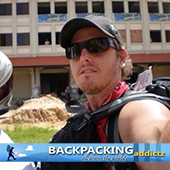Republic of the Philippines is an archipelago, said to be in the shape of an eagle, the national animal, poised in the Southeast well-known for its magnificent beaches and carefree people. The Philippines is an “island paradise to the 7,107th power”. There’s an island for everybody. Some say it’s located on the wrong side of the Pacific, looking ever-ready to be engulfed by the sea, but its location, in fact, is what saved it from the tsunami of 2004. Afloat massive bodies of water on all sides, the archipelago forms one of the world’s longest coastlines, meaning non-stop beach fun, each coast appropriate for certain wind and water sports.
The country is an epitome of what is a melting pot quite apparent on the faces and on the table. The Visayan Islands, one of the major islands, was the pit stop of Southeast Asian Trade Routes where the Chinese, Arabs, Indians, and other Asian nations traded pre-hispanic times. Americans, Germans, and Hispanics are also some of the modern Visayans’ ancestors. A modern Filipino would likely manifest multi-racial features causing some to look Latino, Chinese, Malay, Polynesian or Thai, but one of the original settlers of the Philippines recorded dates back from 20,000-22,000 B.C.E, the Tabon Man, who is in more ways “Australian” in physical type than Malay.
Also tagged the novelty of being the “World’s Text Capital”, there are about 1 billion text messages sent across the country every day. The nation possesses an advanced sophisticated mobile telecommunications system that even allows mobile banking, shopping, and reloading of all things prepaid from train passes, internet games, to cable TV. However, modernization and progress are unequal and concentrated in the cities, while tourism mostly supports the economy of some islands and towns. And it is true, Filipinos are among the most vulnerable victims of the global economic slum. But this is the Philippine charm, a healthy balance of the old and new world at virtually any place you go, even in the most modern cities, like the cities of Makati and Manila there thrives elements of old.
GEOGRAPHY
The Philippine archipelago (13 00 N, 122 00 E) on the outlying periphery of the Pacific ring of fire and the typhoon belt, it’s by odd miracle the Philippines has been devoid of powerful seismic and typhoon activity. The Philippines’ land territory is vastly rolling mountains inland and flat lowlands from centre to coasts covered by tropical rainforests, the highest of which is the Mt. Apo in Mindanao boasting a height of 2,954 metres above the Philippine Sea level. The total area of 300,000 km2 includes Philippine territorial waters of 1.67 million km2 producing a unique marine species of 2,400 fish species and 500 of coral, hence a favourite among marine biologists and underwater explorers. The Apo Reef is after all the world’s 2nd largest coral reef system. Rich with natural resources and natural gases, the land and seas are in large threat of exploitation by rampant deforestation and coral reef degradation, although rural communities are deeply involved with preservation of the migratory animals like birds, dolphins, and whales.
CLIMATE
The climate here is tropical marine bearing great resemblance to most other countries in SEA with 3 distinct seasons: hot and dry season from March to April, rainy (southwest monsoon) from June to October, and cold season (northeast monsoon) from November to February. The hottest month is in April, but travellers continue to flock rain or shine. Temperatures are always cooler year-round away from the metro and towards the highlands.
PEOPLE
The Philippine population holds a count of 97,976,603 as of last year, 2009, add an estimate of 11 million of Filipino ancestry abroad. In the Philippines, “poverty” is given a new meaning that denotes a day without eating as a third of the population living below the poverty line, in the worst cases, at a dollar a day. The Philippines is the largest Asian Christian nation. As a result of the 300-year Spanish colonial rule, the population is 90% Christians and the remainder, particularly in Mindanao, former territory of Borneo, mostly Muslims.
LANGUAGE
FILIPINO is the official language used simultaneously with ENGLISH in state, business, and foreign affairs. Filipino can be described as Tagalog infused with Spanish and other borrowed words. Tagalogs are the de facto predominant ethno-linguistic group forming one-thirds of the population, followed by the 2nd major group, Cebuanos, then Ilocanos, Bisayas, Ilonggos, Bikolanos, and the Warays. Filipinos are naturally multilingual with over 175 ethno-linguistic groups and languages and dialects. With a big Chinese enclave all over the Philippines, CHINESE is gradually infused with the language.
The eight other major languages are Tagalog, Cebuano, Ilocano, Ilonggo, Bicol, Waray, Pampango, and Pangasinense. A modern Filipino would have a repertoire of at least 3 languages: Filipino, English, and a local dialect. The older generation possess knowledge of Spanish, while most of the younger generation, even in the most remote tribal areas, are proficient to experts in English. The Philippines has, in fact, more English speakers than New Zealand. There are a great number of creole Spanish languages as well.
ATTRACTIONS
There are just as diverse options for tourist spots and off-the-beaten-path travels in the country. The most sensible advice: independent travel off the beaten path. The traveller will definitely find a personal paradise because the Philippines is abundant in nature wonders, rich in culture expression, and teeming with brilliant discoveries. With the long coastline, the 5th longest in the world, looking for beaches is like shopping in the biggest mall in Asia, which is right here in Manila as well, the Mall of Asia. White sand beaches are ubiquitous in all three key islands, Luzon, Visayas, Mindanao, the best to date are Bohol, Dakak, El Nido, Tambuli and The Pearl Farm. The world centre for extreme sports, especially kite surfing is Boracay, but is Siargao is superior for surfing.
But the Philippines is more than a huge water park. Bohol alone has loads to offer besides blinding white sand beaches, sultry Chocolate Hills, extraordinary scuba and snorkelling sites, vibrant butterfly farms, dolphin and whale watching, mangroves, river-cruise restaurants, tarsier petting, trekking and hiking. There are also many such places of rich historical significance like Intramuros, Vigan, Bataan and Cebu where the traveller will behold of old colonial basilicas and war ruins. How about the experience a la Batanes extraordinaire, Ireland in Asia? This is a small group of 10 islands, miles north of Luzon featuring extraordinary stone-houses and excellent views of the ocean that revoke a recurring feeling of Ireland, Scotland or New Zealand. The Hundred Islands in Pangasinan are also a treat of a hundred times. Most of these places are shy of heavy tourist crowds, but expect Baguio to teem with locals at summertime. Forested, flowery, and elevated 1,500 metres above sea level, it maintains relatively cool temperatures with a mean of 18°C. However, Tagaytay, the site of the crater-lake Taal, is the ideal city escape. It takes only 1.5 hours away from Manila, but half a lifetime to fully experience the whole archipelago.
FOOD
Nowhere has travelling been easier than here and now as international travellers can fly to and within the Philippines into airports in Manila, Subic, Cebu, Davao, Kalibo, Zamboanga, and as a nation of sea farers, travelling by water is no option, but a way of living, much like eating. The Filipinos love their food and, well, others too, eating around 6 times a day (3 main meals, 3 snack meals). A main meal constitutes of rice and a concept called “viand” (ulam) which is a general term for the accompaniment to rice. This could be a savoury dish, stew, fried meat or fish, or cooked vegetables.
That’s why Philippine cuisine is fusion cuisine of Malayo-Polynesian, Spanish, Chinese, American, European, Indian, and Middle-eastern. Adobo, Hispanic-Filipino legacy, is the national dish, but is a culinary concept more so for all dishes cooked in soy sauce and vinegar. Home-meals in general include a spread of fried or sautéed meat, steamed, boiled, or sautéed vegetables, rice, and soup, eaten in no definite order and amount. Condiments vary from soy sauce, fish sauce, and shrimp paste with a hint of Philippine lime, chilli, garlic, onions, etc.
Each province or ethnic group have traits and dishes akin to their culture, but typically served are sinigang, sour soup with any meat or seafood and vegetables, nilagang baka, beef stew with potatoes, carrots, string beans, and vegetables, pinakbet, vegetables with meat cooked in shrimp paste. Most other dishes are tomato-based which exhibit Spanish influence like paella, valenciana, pochero, mechado, kaldereta and afritada. A regional specialty (Bacolod) is marinated chicken grilled and called inasal– a general term to meat prepared and cooked a certain way. Western food chains are everywhere and world cuisines are all here. Rice is a staple to most tables, seafood is widely enjoyed, and dessert is diverse and colourful from rainbow rice cakes called sapin sapin, chocolate porridge, pot stickers, pastries, cakes and sorbets, which are eaten either with a meal or during a special meal time for desserts and snacks called merienda. Hot or cold, they eat it all. The traveller has got to love this place, because it is one of the few places in the world that eats and drinks chocolate for breakfast.
Only not all Filipinos enjoy these culinary wonders with a quarter of the population eating less than 3 meals in a day and going more hungry, and it is this poverty and the government’s elitist insensitive cracks that drive people to desperation and lawlessness. To the travellers who get to explore the beauty and opulence of the country and its culture, life is a beach. To the locals, life is just hard.
Josh Boorman
Editor-in-chief
Backpacking Addictz
Twitter: @backpackaddictz
Backpacking Addictz is a website set up by backpackers for the use of backpackers. On this site you will find a lot of very valuable backpacking information surrounding different destinations and countries from around the world. Also very helpful backpacking tips and travel advice on planning a budget travel and backpacking adventure. You will also find an enthusiastic and insightful backpacking blog which is regularly updated with new posts and article.
Backpacking Addictz Travel eGuides are a fantastic, cheap and easy way to get hold of a vast amount of backpacking information prior to setting off on your backpacking adventure.







Leave A Response